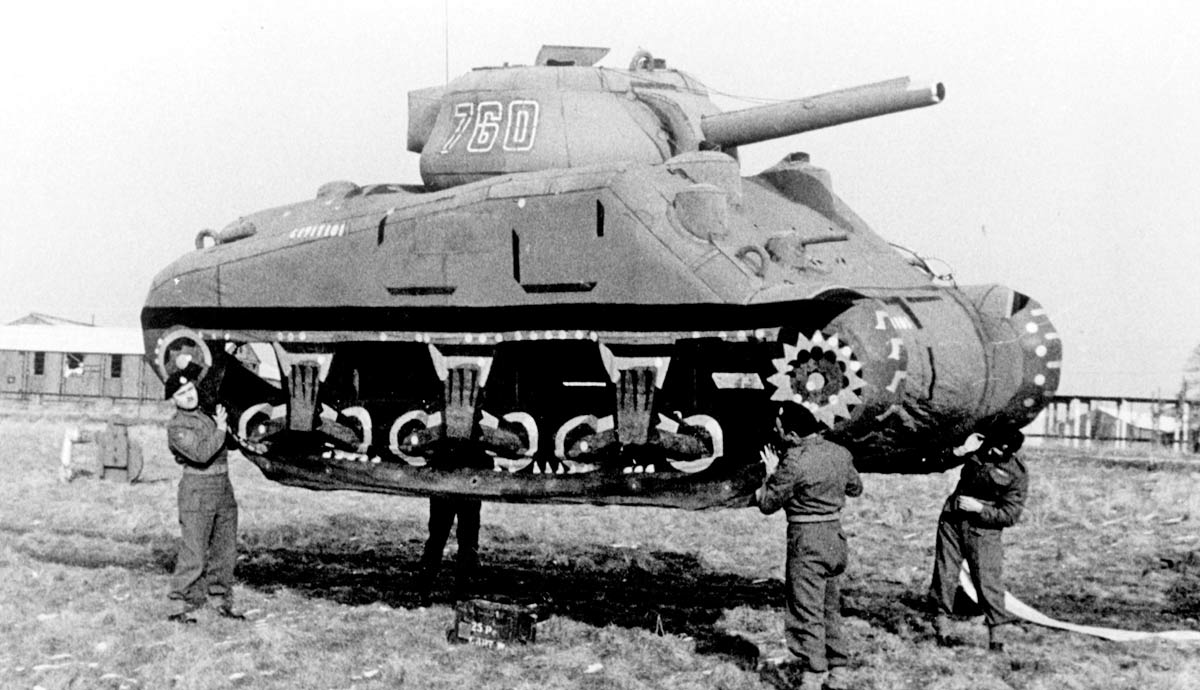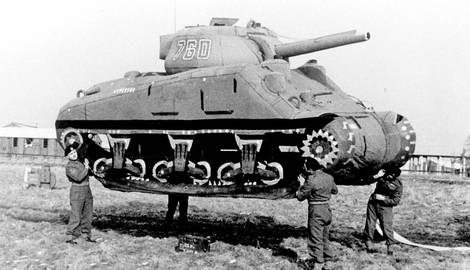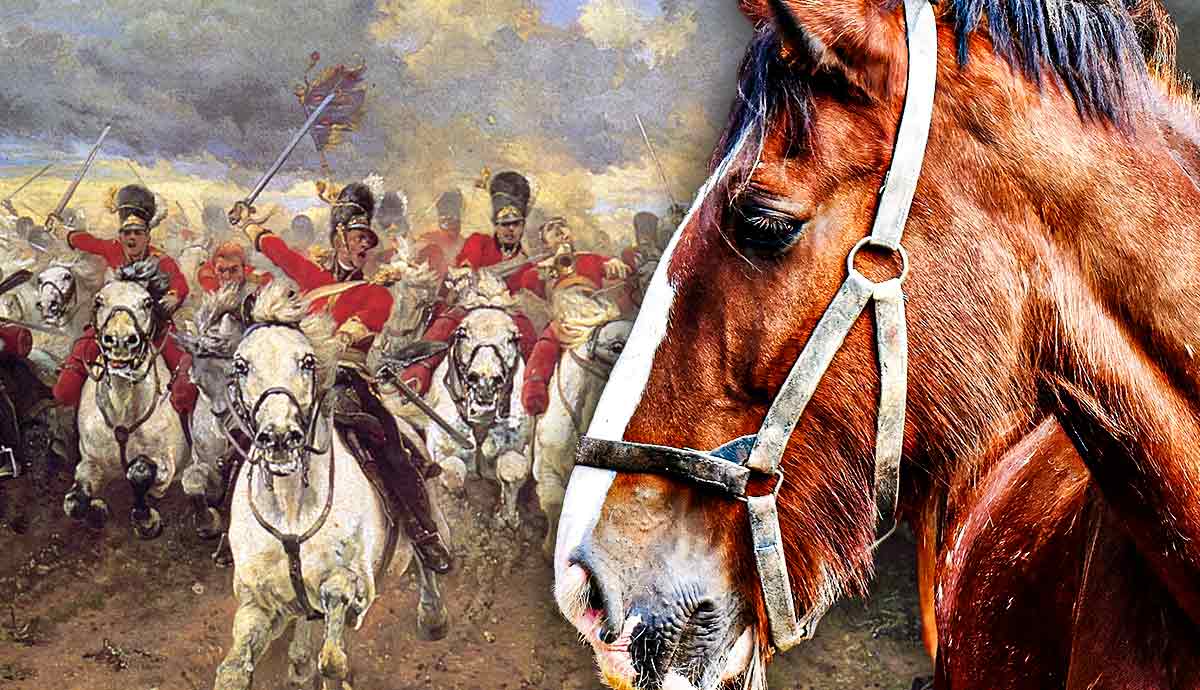
In 1944, a tremendous challenge loomed for the Western Allies of World War II: Nazi Germany fully occupied France and was anticipating the necessary invasion. Although the Allies had amassed huge forces in Britain to storm across the English Channel and hit the Nazis hard, the Germans had been preparing. Any invading force would be outnumbered, at least initially, by the total German forces in France. Thus, the Allies had to embrace strategies and tactics that would outwit the enemy. Using special effects, the Allies tricked the Germans into attacking fake targets and expending their forces unnecessarily, opening them up to counterattacks.
Importance of Deception in Warfare

War is often brutal, bloody, and devastating. To minimize this devastation to their own forces and territory, nations attempt to defeat their foes as swiftly as possible rather than battling every possible enemy unit. This often includes using deception to fool the enemy and gain advantages on the battlefield, such as causing the enemy to pointlessly divert forces to areas not under threat. Throughout history, there have been many examples of this. During the American Revolutionary War, for instance, US General George Washington created fake battle plans and “accidentally” let information slip to a known British spy, tricking the redcoats into focusing their forces on the wrong areas.
Almost 80 years later, during the American Civil War, Confederate forces duped their Union opponents for months by simply painting logs to look like cannons, creating fake forts that kept Union troops at bay. During World War I, the British used fake trees as observation posts to allow them unobstructed surveillance of German positions and movements. Fake tanks were also created to mimic the new weapons that frightened advancing infantry. These unconventional strategies were allegedly influenced by Europeans’ encounters with Native Americans in the New World after 1500. Native warriors used speed, stealth, and camouflage instead of lining up rows of infantry. Quickly, Europeans adapted to this faster, mobile, unconventional warfare and began using it against other similarly armed nations.
1940: British Use Dummies to Thwart the Blitz

In autumn 1940, Britain alone faced the war machine of Nazi Germany after the unexpectedly quick fall of France. Hundreds of German bombers targeted London and other cities in the infamous Blitz, destroying both military and civilian targets. Quickly, the British realized that they needed to lure German bombers away from valuable targets. They simultaneously ordered blackouts, depriving bombers of visual clues, and created lighted decoy sites in easy-to-find locations. These became known as “Starfish sites” and successfully tricked German bomber crews.
The Starfish sites, beginning in November 1940, used fires and lights to simulate factories, and up to 1,000 tons of German bombs were dropped ineffectually on these decoys during the Blitz. A total of seven permanent sites were created to divert German bombers from actual cities. Fortunately, the Blitz ended by late spring 1941 as Germany realized it could not bomb Britain into surrender… and decided to focus on invading the Soviet Union instead. Starfish sites were decommissioned beginning in late 1944 as the lack of German air raids over Britain made them unnecessary.
1940-43: Other Deception Operations in World War II

The use of deception went far beyond Britain’s Starfish sites. As Germany targeted Britain with the aerial Blitz, fellow Axis power Italy was invading territories in North Africa. The North African front quickly became a competition in deception as well, with Britain creating innovations in camouflage using skills and techniques from filmmakers. Equipment could be hidden or made to look damaged to encourage the enemy to overlook it. Tanks, a feared but valuable target, could be disguised as transport trucks to make them less likely to be focused on. Conversely, fake tanks could be created from transport trucks to intimidate and/or distract the enemy.
Allowing false battle plans to fall into enemy hands was another popular deception tactic, done by the Germans in 1942 on the Eastern Front and the Allies in 1943 in the Mediterranean with “Operation Mincemeat.” This was often reinforced by moving actual units, typically without informing one’s own soldiers of the ruse. Radio traffic was left unencoded for the enemy to easily pick up, making them feel that they had “discovered” the battle plans. In both situations, the deception worked and allowed the offensives to proceed successfully, catching the defenders by surprise.
1942: The United States Creates the OSS

In December 1941, the United States entered World War II as a relative latecomer, responding to the Japanese surprise attack on Pearl Harbor. However, the US had been anticipating entry into the conflict, and thus was not caught entirely unprepared. The idea of creating a unified, central intelligence agency for the country had been broached in May 1941. British intelligence figures provided assistance to unofficial diplomat William “Wild Bill” Donovan, who became head of the Office of Coordination of Information (COI) in July. Eleven months later, with the nation now at war, the COI became the Office of Strategic Services (OSS).
The OSS began assisting local anti-Axis groups later in 1942, modeled closely after British commandos who had been operating in North Africa. In fact, the OSS worked closely with the British Special Operations Executive (SOE) in Nazi-occupied France to aid the French Resistance. After the Italian armistice in September 1943, the OSS aided anti-Nazi partisans and escaped Italian prisoners of war in northern Italy. The OSS was less active in the Pacific Theater due to political disputes with General Douglas MacArthur, US commander of Pacific operations, and Vice-Admiral William Halsey.
January 1944: The Ghost Army Created

The Western Allies (United States, Britain, and Canada) agreed with the Soviet Union to open a “second front” against Nazi Germany. This would be a major undertaking, and planning had to be superb—a failed invasion would cost the Allies thousands of lives and many tons of material. Two American officers, Ralph Ingersoll and Billy Harris, were inspired by British deception operations in North Africa. In late 1943, they began working toward the creation of a special unit to adapt these British tactics for the US military. They convinced US Army leadership that a specialized unit was needed, and it was officially activated on January 20, 1944.
Colonel Harry Reeder became the commander of this specialized unit, the 23rd Headquarters Special Troops, which contained two existing units and a third, specially created unit. The largest unit, the 603rd Engineer Camouflage Battalion, was an existing unit that created various camouflages and decoys. A newer unit, the 3132 Signal Service Company, created simulated sounds to confuse the enemy. The fighters and demolitions force came from the 406th Engineer Combat Company, led by Captain George Rebh. These combined units formed the Ghost Army and trained hard for deployment to France following the initial invasion on D-Day (June 6, 1944).
June 1944: The Ghost Army Arrives in France

On June 12, the first call came in to put the Ghost Army and its 1,100 men into action. They hung close to the front lines and used various ruses and deceptions, such as 500-pound speakers broadcasting the sounds of heavy armor and bridge-building, to fool and intimidate the Germans. Used at night, the speakers were audible up to 15 miles away and made many German units abandon posts out of fear of an oncoming American army. Fully equipped, the Ghost Army of 1,100 men could effectively simulate a force of 30,000 men, causing German units to evacuate valuable posts.
Soldiers in the Ghost Army often wore fake uniforms with patches from different units, confusing German spies and informants. They could fool the enemy into believing that far-away units were already arriving, sowing panic. They also spread false information in recently-liberated French towns, knowing the rumors would quickly reach the enemy. In a pinch, the Ghost Army also aided in combat operations to assist with the liberation of France, including at the siege of Brest in August. There, the Ghost Army successfully fooled the Germans into thinking the American position was much stronger than it actually was. To do this, they even used inflatable tanks.
River Crossings and Filling Gaps: The Ghost Army Tricks the Defense

After Operation Brest, the Ghost Army primarily assisted with ensuring the success of river crossings. As the Western Allies pushed east toward Germany, they had to cross several rivers, which were natural defensive points for the Germans. While combat units were wading across or trying to construct bridges, they would be easy targets for defenders. The Ghost Army created realistic-looking units preparing to cross a river, which distracted the Germans from the real crossing about to take place.
A second task was filling holes in defensive lines and occupied areas close to the front. In Operation Bettembourg, the Ghost Army pretended to be a much larger armored unit to fill a gap in General George Patton’s line while German patrols were looking for an area to exploit. Between September 15 and September 22, 1944, the Ghost Army used its entire bag of tricks to make the Germans believe that a full-size American armored unit was operating north of Bettembourg, Luxembourg. The mission was successful. The Germans did not attack the gap as they could have, and Patton filled the gap by September 22.
December 1944 to January 1945: The Ghost Army and the Battle of the Bulge

Combat continued in eastern France throughout the summer and early autumn. Unlike World War I, Germany would not seek an armistice to end the war—the Allies would have to invade Germany itself. In December, Germany struck back in a surprise offensive through Belgium, hoping to split the American and British armies and retake the port city of Antwerp. This action became known as the Battle of the Bulge due to the massive salient creating a “bulge” in the front line. The Ghost Army served with distinction again, simulating large units to slow down and misdirect the Germans.
Specifically, the Ghost Army assisted General George Patton’s path to relieve the Americans under siege at Bastogne, Belgium. They used fake radio transmissions in Operation Kodak to make the Germans think Patton’s forces were heading into defensive positions rather than going on the attack. Ultimately, the Americans stalled and then pushed back the German offensive, ensuring that the war would eventually be won by the Allies. For its work in France between Normandy and the end of the Battle of the Bulge, the Ghost Army is estimated to have saved the lives of thousands of Allied soldiers.
After March 1945: The Ghost Army Disbanded

By spring 1945, Germany was on the verge of defeat. In March, the Ghost Army was called into action to help distract the Germans ahead of the Allied crossing of the Rhine. The deception was successful, utilizing hundreds of inflatable decoys and lots of false radio traffic, and got the Germans to set up defenses 20 miles away from the actual river crossing. As in France, the Ghost Army used its powerful speakers to broadcast sounds of construction, tricking the Germans into believing that bridges were being constructed to invade. Evidence of the success of Operation Viersen was reinforced by a captured German document showing the anticipated American crossing precisely where the Ghost Army was portraying it.
The nine months of action helped shorten the war, but cost the lives of three Ghost Army soldiers and wounded about 30 more. A month and a half after Operation Viersen in late March, Germany surrendered unconditionally, and World War II in Europe was over. On June 23, 1945, the 23rd Headquarters Special Troops set sail for home and was restationed in Pine Camp (now Fort Drum), New York. The war in the Pacific continued, but the Ghost Army had been designed for operations in Europe and was not immediately transferred. After only a week at Pine Camp, the atomic bombs were dropped on Japan, leading to the end of the war. Officially, the 23rd Headquarters Special Troops was demobilized in September 1945 after the formal end of the war on V-J Day (September 2, 1945).
Legacy of the Ghost Army

The 23rd Headquarters Special Troops largely remained a secret after the war due to the classified nature of their work. Some of their exploits only became declassified in the 1990s, 50 years after the end of World War II. On March 21, 2024, almost 80 years after being put into action during the war, three of the seven surviving members of the Ghost Army received the Congressional Gold Medal at a ceremony in the US Capitol honoring their crucial work. Most members of the Ghost Army rarely or never spoke of their secretive operations in the years after the war, respecting General Dwight D. Eisenhower’s half-joking warning to hang anyone who talked.
Rick Beyer, president of the Ghost Army Legacy Project, told National Public Radio in 2024 that interest in the Ghost Army returned in the late 1980s, during the waning days of the Cold War. The deception practices used in World War II returned in the Gulf War of 1990-91, when the US faced an industrialized foe for the first time since the Korean War, when deception practices were also utilized. The practices used and lessons learned by the Ghost Army in 1944-45 were invaluable to US operations in later conflicts where it was important to be able to misdirect a powerful opponent to save American troops.
Today: Psychological Warfare and New Challenges

When finally recognized for their heroic work, Ghost Army veterans got to meet with present-day psychological operations (PsyOps) soldiers. Today’s PsyOps units in the US Army conduct deception activities, find ways to influence local populations, and research how to best target enemy psychological vulnerabilities. During the Global War on Terror after the September 11 attacks, these units helped “win hearts and minds” in the Middle East and Afghanistan to erode local support for terrorist and radical political organizations. Using propaganda and disinformation is still a popular military tactic.
The physical exploits of the Ghost Army are less common today due to advanced technology—enemy sensors are less likely to be fooled by decoys. Additionally, the firepower advantage enjoyed by the United States and its western allies against recent foes, usually terrorist or rebel groups, makes the need for deception operations less necessary. However, some military leaders, such as US Army General Charles Q. Brown, want to restore America’s ability to conduct physical deception operations due to the growing likelihood of another industrialized war, especially against China.










